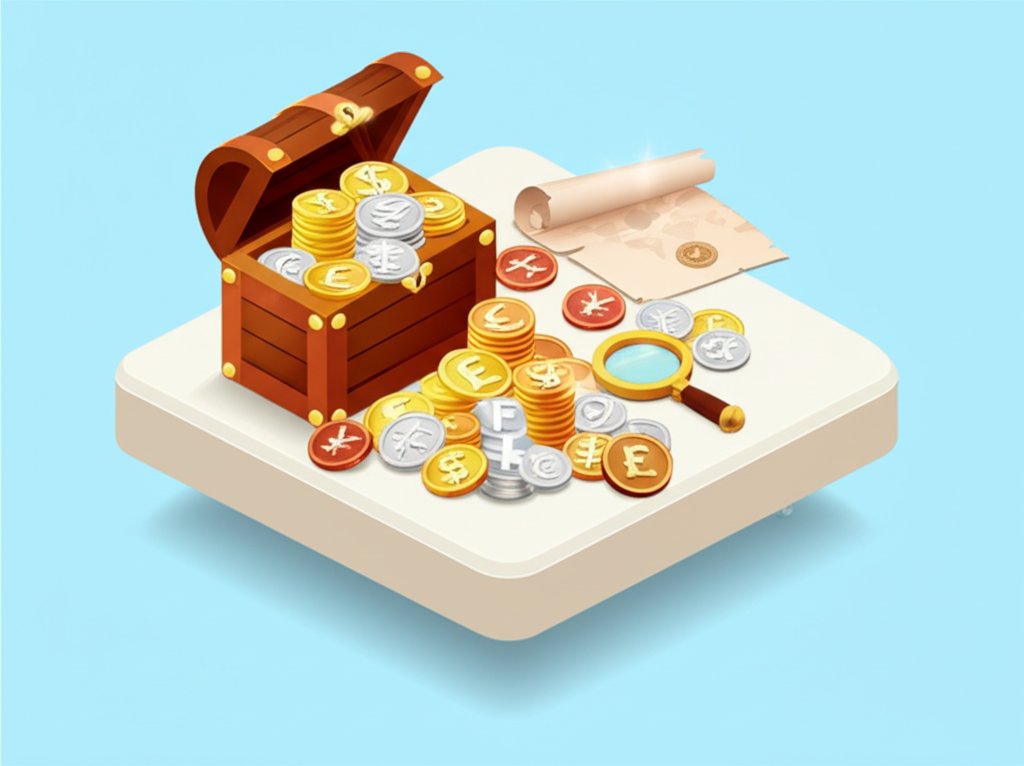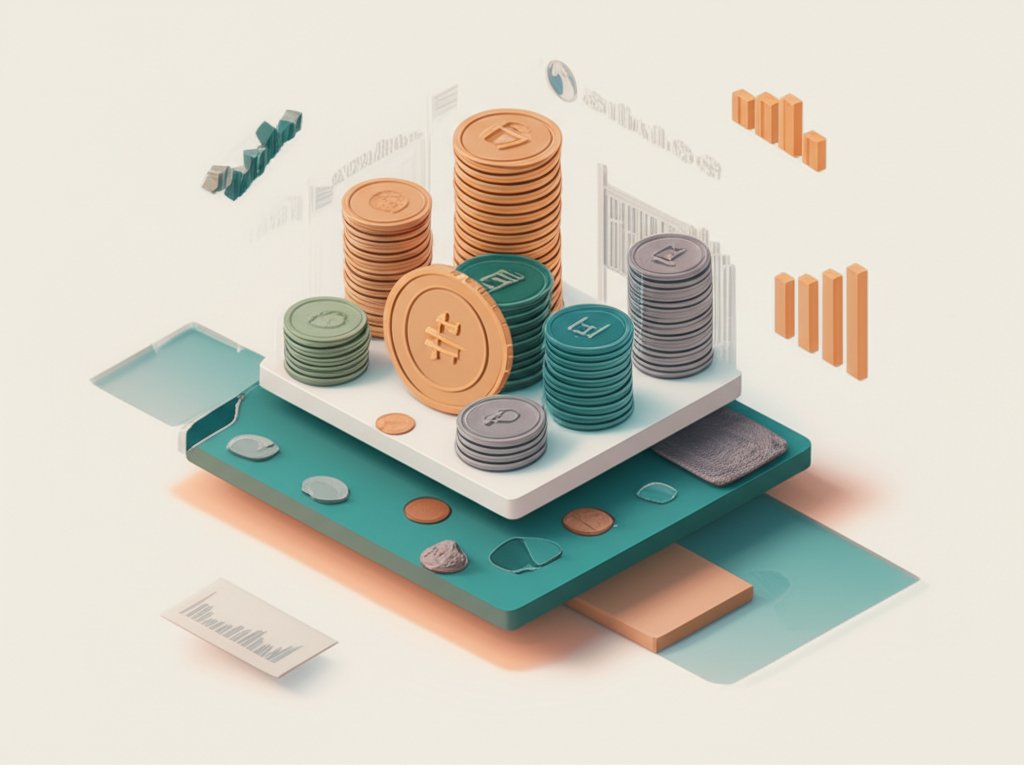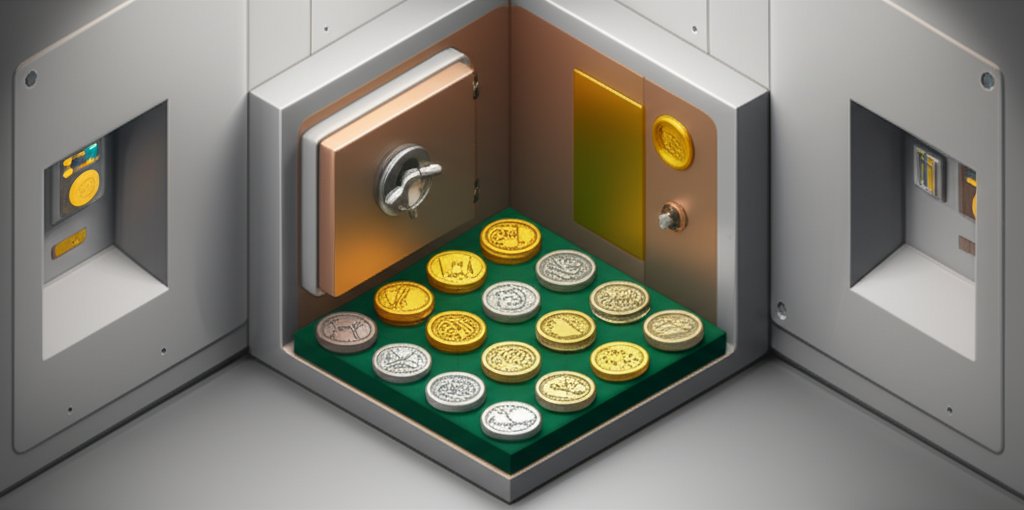
Imagine sifting through a dusty box of old keepsakes, and among them, you discover a foreign coin – perhaps an ancient Roman denarius, a forgotten Chinese dollar, or a peculiar European piece. What if that seemingly ordinary metal disc was not just a relic of the past, but one of the most valuable foreign coins known to exist, potentially worth a fortune? The world of numismatics is full of such stories, where rarity, history, and a touch of luck converge to turn humble currency into staggering wealth.
This isn't just about ancient gold; even more recent coins can hold immense, often hidden, value. Understanding what makes an international coin truly special is the first step towards unlocking its potential, transforming a simple curiosity into a serious investment.
At a Glance: Unearthing Your Coin's Hidden Worth
- Discover the "Why": Learn the core factors—rarity, condition, historical context, and minting errors—that drive a foreign coin's value.
- Explore Record-Breakers: Get acquainted with some of the world's most expensive foreign coins, including ancient and modern examples.
- Spot Overlooked Gems: Identify types of foreign coins that, while not multi-million dollar pieces, still command significant prices.
- Master the Assessment: Gain a practical, step-by-step guide to evaluating your foreign coins, from initial inspection to professional appraisal.
- Avoid Common Pitfalls: Understand critical dos and don'ts, especially regarding cleaning and authentication.
The Anatomy of a Fortune: What Makes Foreign Coins Valuable?

The allure of a valuable foreign coin isn't simply its age or metallic composition. While precious metals certainly contribute to intrinsic value, a coin's true worth in the collector's market is a complex interplay of several key factors. Think of it as a unique fingerprint, each element adding to its distinct desirability.
- Rarity: This is often the primary driver. Coins struck in very limited quantities, prototypes (pattern coins), or those withdrawn from circulation early become exceptionally scarce. The fewer surviving examples, the higher the demand and price.
- Condition (Grade): A coin's state of preservation is paramount. An "uncirculated" coin, one that has never entered general use and retains its original mint luster, will always be far more valuable than a worn, scratched, or damaged counterpart. Even minor imperfections can drastically reduce value.
- Historical Significance: Coins tied to pivotal historical events, significant rulers, or important cultural shifts carry an inherent narrative value. A coin celebrating a major victory, commemorating a short-lived reign, or depicting a historical figure adds layers of appeal to collectors.
- Minting Errors: Sometimes, mistakes are goldmines. Off-center strikes, incorrect metal planchets, or double dies are unintended anomalies that, paradoxically, can make a coin extraordinarily unique and highly sought after by error collectors.
- Demand & Provenance: The number of collectors actively seeking a specific coin, combined with its documented history of ownership (provenance), can significantly influence its market price. A coin with a verifiable past belonging to a famous collection can fetch a premium.
These factors apply universally, whether you're looking at a piece from the ancient Roman Empire or a commemorative coin from a modern nation.
A Glimpse into the Vault: The World's Most Valuable Foreign Coins

While the odds of finding one of these exact pieces in your attic are slim, examining them provides an unparalleled understanding of what truly drives numismatic value. These coins aren't just currency; they're historical artifacts that have shattered auction records, often fetching millions of dollars.
Here's a curated look at some of the absolute pinnacle examples of valuable foreign coins that have made headlines:
- Umayyad Gold Dinar (723 AD): Nearly $4.29 Million USD
- Origin: Umayyad Caliphate (Mecca, Arabia)
- Why it's valuable: This ancient Islamic gold coin is exceptionally rare, struck from gold specifically sourced from the legendary Ma`din Bani Sulaim mine during a period of significant expansion. Its age, historical context, and material purity make it a treasure.
- Q. Servilius Caepio (M. Junius) Brutus AV Aureus (42 BC): $3.5 Million USD
- Origin: Ancient Rome
- Why it's valuable: Issued by Brutus to celebrate the assassination of Julius Caesar, this ancient Roman gold aureus features Brutus's head on one side and two daggers on the other. Its direct link to such a monumental historical event and extreme scarcity make it profoundly significant.
- $1 Million Canadian Gold Maple Leaf (2007): $3.2 Million USD
- Origin: Canada
- Why it's valuable: Weighing a staggering 100 kg, this coin was once the world's largest gold coin. Initially valued at $1 million CAD, its sheer size, purity, and status as a unique bullion piece cemented its record-breaking auction price.
- Long Whisker Dragon Dollar (1911): $3 Million USD
- Origin: China
- Why it's valuable: Struck at the Tientsin Mint in the final year of the Qing Dynasty, this exquisite silver pattern coin was never adopted for widespread circulation. Its stunning "long whisker" dragon design and extreme rarity as a prototype make it highly desirable.
- Silver Agrigentum Decadrachm (409-406 BC): $2.9 Million USD
- Origin: Ancient Greece (Agrigentum, Sicily)
- Why it's valuable: This masterpiece of ancient Greek coinage showcases a powerful quadriga (four-horse chariot) on one side and two eagles on the other. Its artistic brilliance, age, and exceptional preservation for a coin of its era contribute to its monumental value.
- Silver Ruble Pattern (1825): $2.64 Million USD
- Origin: Russia
- Why it's valuable: Featuring the profile of Constantine and the imperial double-headed eagle, this Russian pattern coin is a testament to unadopted designs. Its status as a scarce prototype from a pivotal historical period makes it incredibly rare.
- Silver “Mukden Tiger” Pattern Dollar (1928): $2.28 Million USD
- Origin: China
- Why it's valuable: This Chinese pattern coin bears the portrait of Governor Chang Tso-lin, famously known as the "Mukden Tiger." Its association with a powerful regional warlord during a turbulent period and limited production make it a collector's prize.
- Edward VIII 5 Pounds (1937): $2.28 Million USD
- Origin: United Kingdom
- Why it's valuable: Struck during the incredibly brief reign of Edward VIII, fewer than a dozen of these British gold 5-pound pieces are known to exist. Their scarcity is a direct result of the king's abdication, making them incredibly significant historical artifacts.
- 100 Ducat of Sigismund III Vasa (1621): $2.16 Million USD
- Origin: Polish-Lithuanian Commonwealth
- Why it's valuable: This massive gold coin depicts King Sigismund and the Commonwealth's coat of arms. Its substantial size, high gold content, and rarity as a ceremonial or presentation piece from a powerful European empire drive its value.
- Sestertius of Hadrian (135/6 AD): $1.64 Million USD
- Origin: Ancient Rome
- Why it's valuable: A large brass coin commemorating Emperor Hadrian's 20th anniversary, this sestertius is renowned for its detailed iconography and historical context. Its exceptional condition and historical narrative contribute greatly to its worth.
Beyond the Millions: Significantly Valuable Foreign Coins You Might Actually Find
While the multi-million dollar examples are fascinating, many other foreign coins hold substantial value that's much more accessible to everyday collectors and inheritors. These are the pieces that, with a keen eye and a bit of research, could turn into a pleasant surprise.
When you're Identifying valuable international coins, these are the kinds of examples that often appear in private collections or at estate sales.
- 1947 King George VI Canadian Silver Dollar:
- Value Range: $500 - $1,500+
- Why it's valuable: Made of 80% silver, its value stems from a significant inscription change due to India's independence. Coins struck before the change but dated 1947 are rare and highly sought after.
- 1916 Australian Penny:
- Value Range: $3,000 - $15,000+ (uncirculated)
- Why it's valuable: A bronze coin minted in limited numbers during World War I due to wartime material shortages. Its scarcity, especially in higher grades, drives its impressive value.
- 1897 Russian 1 Rouble:
- Value Range: $500 - $2,000+
- Why it's valuable: A 90% silver coin from the reign of Tsar Nicholas II. Its appeal lies in its historical context—the last imperial dynasty—and relatively lower mintage numbers compared to other years, particularly in excellent condition.
- 1933 German Reichsmark:
- Value Range: $200 - $1,500+
- Why it's valuable: A nickel coin from Germany's Weimar Republic. While many exist, well-preserved examples from specific mints or with particular errors can be quite valuable as a representation of a tumultuous period in history.
- 1943 Australian Half-Penny:
- Value Range: $500 - $4,000+
- Why it's valuable: Another bronze wartime coin with low mintage figures due to World War II. Its scarcity, combined with collector demand for complete date sets, pushes its value, especially for higher grades.
- 1874 Republic Bronze Pattern "Burgers" Pond (South Africa):
- Value Range: $7,000 - $9,000+ (estimated)
- Why it's valuable: This is an incredibly rare bronze prototype (pattern coin) from the South African Republic. Pattern coins, by their very nature, are produced in minuscule quantities for evaluation and are often discarded, making survivors extremely valuable.
- French Napoleon & Josephine Gold Specimen (1804):
- Value Range: $20,000 - $25,000+ (estimated)
- Why it's valuable: A striking gold medal or "specimen coin" issued to commemorate Napoleon's coronation. Its historical significance, precious metal content, artistic quality, and ceremonial purpose make it a highly desirable piece.
Your Numismatic Playbook: How to Assess Your Foreign Coin Collection
Successfully identifying and valuing your foreign coins requires a methodical approach. It’s a journey of careful observation, informed research, and often, expert consultation. Here’s how to navigate it:
Step 1: Condition is King (But Don't Clean!)
Before anything else, examine the coin's physical state. Look for:
- Scratches and Dings: Surface damage is a major value detractor.
- Wear: Is the design still sharp, or are details faded from circulation?
- Luster: Does the coin retain its original "cartwheel" effect or mint shine? This is crucial for uncirculated (mint state) coins.
- Corrosion/Environmental Damage: Green or black spots, pitting, or rough surfaces indicate poor storage.
The Golden Rule: Never Clean a Coin. This cannot be stressed enough. Cleaning, even with soft cloths or "coin cleaner" products, almost always degrades a coin's surface. It removes the natural patina that collectors value and can leave microscopic scratches that permanently reduce its value, often by 50% or more. Let the professionals handle any necessary conservation.
Step 2: Unraveling the Story: Identifying Key Features
With a clean (but uncleaned) coin, grab a magnifier (10x is ideal) and scrutinize the details:
- Date: This is fundamental. Note both the numerical date and any regnal year or calendar systems used (e.g., Islamic, Chinese, Julian).
- Denomination: What is the coin's face value? (e.g., Franc, Mark, Rupee, Dinar).
- Country/Ruler: Identify the issuing authority. This might be a monarch's portrait, a national emblem, or an inscription.
- Mint Mark: A small letter or symbol, often near the date or main design element, indicating where the coin was struck. Different mints can have wildly different mintage figures for the same year, affecting rarity.
- Inscriptions & Symbols: Translate any foreign text if possible. Unique symbols, heraldry, or cultural motifs can point to specific historical periods or limited issues.
- Metal Type: Gold, silver, copper, bronze, nickel, or alloys. Weight and magnetic properties can help confirm, but don't perform tests that could damage the coin.
Step 3: The Market Pulse: Researching Recent Sales
Once you've identified your coin's specifics, it's time to see what similar pieces have sold for.
- Specialized Auction Sites: Platforms like Heritage Auctions, Stack's Bowers Galleries, and larger international auction houses (e.g., Spink, Baldwin's) regularly feature foreign coins. Look for "sold listings" to see actual realized prices.
- Numismatic Databases & Price Guides: Reputable online databases (e.g., Numista, PCGS, NGC) offer extensive catalogs, mintage figures, and sometimes price estimates. Physical price guides, though less current, can provide a good baseline.
- Forums & Collector Groups: Online communities can offer insights, but always verify information from multiple sources.
Crucial Point: Your coin's condition relative to the listed sale is paramount. An "uncirculated" coin might sell for thousands, while a "good" condition version of the exact same coin could be worth a few dollars.
Step 4: The Expert Eye: When to Seek Professional Appraisal
For any foreign coin you suspect holds significant value, or if you're uncertain about its authenticity or grade, a professional appraisal is invaluable.
- Authentication: Counterfeiting is a serious issue in numismatics. Experts can differentiate genuine pieces from fakes, which is especially important for high-value or ancient coins.
- Accurate Grading: Professional graders use standardized scales (like the Sheldon scale) to precisely grade a coin's condition. This objective assessment is critical for establishing market value.
- Market Knowledge: Appraisers have their fingers on the pulse of the market, understanding current trends, demand, and niche values that might not be obvious from online research alone.
Look for appraisers affiliated with recognized numismatic organizations (e.g., ANA - American Numismatic Association in the US) or major grading services (PCGS, NGC). Always choose someone reputable and experienced with foreign coinage.
Common Questions & Misconceptions About Valuable Foreign Coins
Collectors often have similar questions when starting out. Here are some quick answers to common queries:
Q: How do I know if my foreign coin is rare?
A: Rarity is determined by mintage figures (how many were originally produced) and survival rates (how many exist today). Researching mintage numbers for your specific coin, date, and mint mark is the first step. If a coin has a very low mintage, or if few examples are known to exist, it's rare.
Q: Should I clean my old foreign coins to make them shine?
A: Absolutely not. Cleaning almost always damages a coin's surface, removing its original patina and potentially scratching it microscopically. This damage is irreversible and will significantly decrease its numismatic value. Leave the coin in its original state.
Q: What's the difference between a pattern coin and a circulation coin?
A: A circulation coin is designed and minted for everyday use by the public. A pattern coin is a prototype or trial piece, struck in very limited numbers to test new designs, metals, or denominations. Pattern coins are extremely rare and often much more valuable because they were never intended for widespread circulation.
Q: Are all old foreign coins valuable?
A: No. While age can add historical interest, it doesn't automatically equate to high value. Millions of common coins were produced over centuries. Value is primarily driven by rarity, condition, and historical significance, not just age. Many old coins are only worth a few dollars.
Q: Where can I get my foreign coins appraised?
A: For formal appraisals, look for certified numismatists or professional coin grading services (like PCGS or NGC, which have authorized dealers worldwide). Many reputable coin dealers also offer appraisal services. Start by searching for "coin appraisal near me" or checking major numismatic organization websites for accredited members.
Your Next Steps: Turning Potential into Profit
Identifying a potentially valuable foreign coin is an exciting discovery, but it's just the beginning. Your immediate actions are crucial to preserving its value and realizing its potential.
- Protect It: If you haven't already, place any suspect coin in a non-PVC, inert holder (like a Mylar flip or slab-style holder). This prevents further damage and keeps it safe.
- Document Your Findings: Create a detailed record for each coin, noting its country, date, denomination, metal, and any unique features or inscriptions. This forms the basis of your research.
- Cross-Reference Your Research: Use multiple reliable sources (auction archives, specialized catalogs, numismatic databases) to confirm identification and gauge potential market value. Pay close attention to condition comparisons.
- Consider Professional Evaluation: For any coin you believe is genuinely rare or valuable, seeking an appraisal from a certified numismatist or submitting it to a professional grading service is the most reliable path. Their expertise ensures accurate identification, authentication, and grading, which are essential for maximizing its market price.
- Explore Selling Avenues: If confirmed valuable, explore options like specialized coin auctions, reputable coin dealers, or private sales. Each has its pros and cons regarding fees, reach, and speed of sale.
The journey of discovering and valuing most valuable foreign coins is a rewarding blend of history, detective work, and financial acumen. With careful attention to detail and a commitment to responsible handling, your foreign coin collection could indeed hold a fortune.